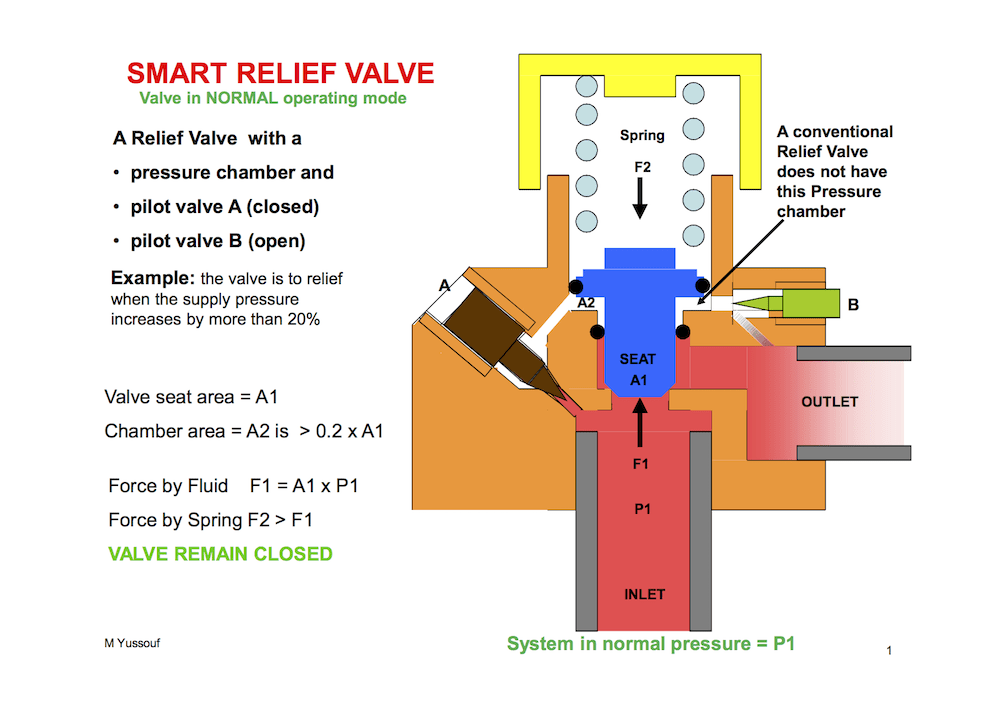A Relief valve is a safety device used in fluid process systems to prevent abnormally high pressure that could cause danger to people, process and equipment.
When an abnormally high pressure develops in the system, the fluid force exceeds the spring force and so the valve opens to relieve the high pressure.
Essential: The valve must always be in good order to protect the system as the high pressure occurrence cannot be predicted (Like an overload trip in electrical installations). The integrity of the relief valves is so important that regulations, industry codes and company policies mandate for routine checking to ensure they are in good order. (Like checking RCDs, smoke alarms).
The Problem: There could be many problems in a relief valve. But one cannot test the valve in-situ for its functionality by applying higher pressure because of the safety concern if the valve failed to function. So, after installation one always assumes that the valve is in good working order.
For testing, the process must be shutdown and then the valve is tested outside the system. Even where a standby valve used, it is still taken out for testing. When outside, the traditional valve is not tested in its true operating conditions. For example, a valve is in ambient temperature using air but its working condition may be at low temperature in ammonia.
In any process industry cost of maintenance and shutdown is a significant expense. So, when tested if the valve is found in good working order, one wonders whether the shutdown was indeed necessary at all, a thought leading to safety relax.
Innovation: In traditional relief valve the valve seat pressure area is fixed; the varying fluid pressure is used to open the valve. The Smart Relief Valve has a built-in separate pressure chamber. When the same or even less fluid pressure is applied in the chamber, it exerts enough force to compress the spring and to open the valve.
Thus the Smart Relief Valve can be tested in-situ for its good working order (as it would behave in the abnormal condition) when the system is in normal pressure condition. Moreover the in-situ testing is done with actual process fluid, in actual process condition and environment which are not the case in a traditional relief valve. One can do the test as and when one needs to gain confidence in its functionality, say after a fire incident in the installation area.
Cost Saving: This will not be significantly expensive than the traditional valve. But the cost saving in maintenance and shutdowns would be enormous, year after year. In addition, one cannot put a value on the confidence level it gives when one is able to test it at any time and have the peace of mind that the system is safe.
Practicality: Doesn’t need any specialised machining. Can be installed just like the traditional valve. With theoretical calculations, a chart can be developed to indicate the valve opening pressure.
Video
Like this entry?
-
About the Entrant
- Name:Mohamed Yussouf
- Type of entry:individual
- Patent status:none








